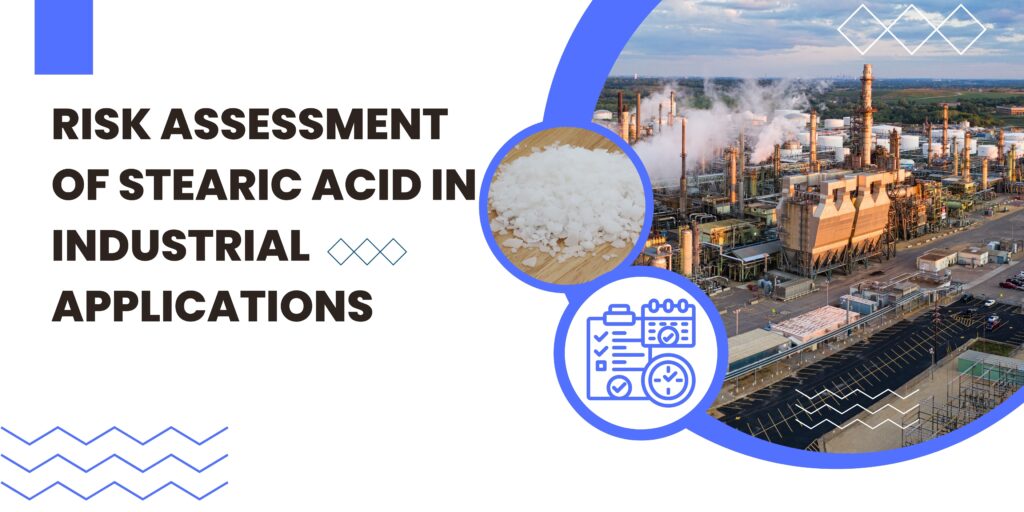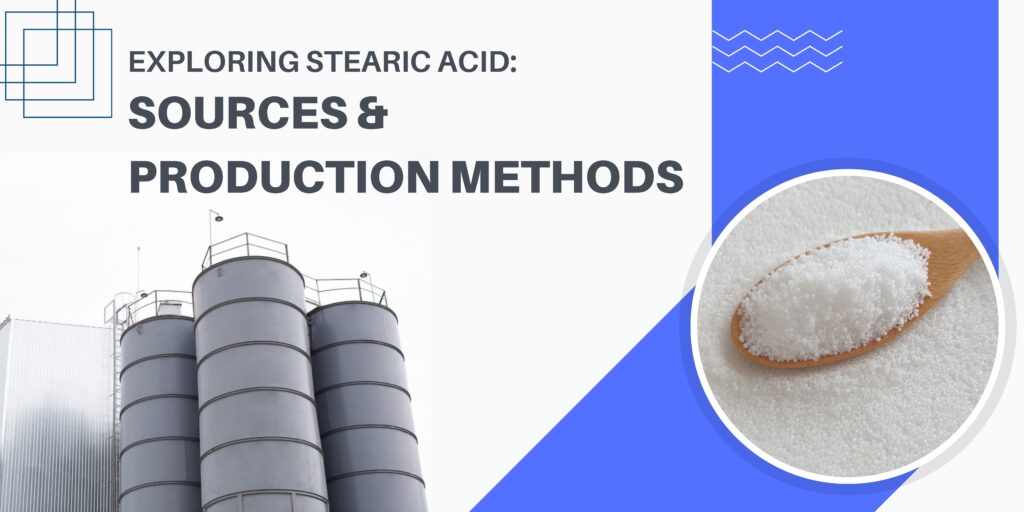
Introduction
Due to its adaptable qualities, stearic acid, a saturated fatty acid, has found extensive use in several industrial applications. Stearic acid is used in many different sectors, from its position as a critical ingredient in the manufacture of cosmetics, drugs, and plastics to its uses in the creation of soaps, candles, and rubber products. However, because stearic acid is a chemical, it includes inherent dangers that must be carefully evaluated and managed in order to protect the environment, employees, and the general public.
Understanding the Hazards
It is crucial to obtain a thorough grasp of the potential risks related to stearic acid before digging further into risk assessment and management. The Safety Data Sheet (SDS), often referred to as the Material Safety Data Sheet (MSDS), offers useful details about the chemical’s characteristics, physical dangers, health risks, and potential environmental consequences.
Health Hazards: Even though stearic acid is often thought to have minimal toxicity, there are still some health hazards. When stearic acid dust, fumes, or vapors are inhaled, the respiratory system may become irritated, resulting in symptoms including coughing, shortness of breath, and sore throat. Skin contact that is prolonged or recurrent might cause dermatitis and moderate skin irritation. Under typical working conditions, major adverse health impacts are uncommon.
Fire and Explosion Hazards: In the presence of an ignition source, such as an open flame or spark, stearic acid is flammable and can burn. Particularly in cramped areas, combustion can emit poisonous fumes and lead to dangerous circumstances. To lessen the risk of fire and explosion, appropriate fire prevention and protection measures are required.
Environmental Impact: Stearic acid is not considered highly hazardous to the environment. However, its improper disposal or accidental release into water bodies can lead to pollution and potential harm to aquatic life. It is crucial to manage and handle stearic acid responsibly to minimize its environmental impact.
Risk Assessment
Identification of possible risks, evaluation of exposure levels, and selection of suitable control measures all depend on thorough risk assessment. The following steps are frequently included in the risk assessment process:
Hazard Identification: Evaluate the potential hazards associated with stearic acid in each step of its lifecycle, from production and transportation to storage, handling, and use.
Exposure Assessment: Measure or estimate the extent of worker exposure to stearic acid. This involves monitoring workplace air quality and assessing potential contact routes, such as dermal contact and inhalation.
Risk Characterization: Analyze the data collected during the hazard identification and exposure assessment to assess the likelihood and severity of adverse health effects and environmental impacts. This step helps in prioritizing risks and focusing on high-risk areas.
Risk Management Strategies
Once the risks are identified and assessed, effective risk management strategies must be implemented to minimize or eliminate hazards associated with stearic acid. Some key strategies include:
Engineering Controls: Implementing engineering controls, such as ventilation systems, enclosed equipment, and process modifications, can effectively reduce worker exposure to stearic acid vapors or dust.
Personal Protective Equipment (PPE): Workers handling stearic acid should wear appropriate PPE, including safety goggles, gloves, and respiratory protection, to prevent direct contact and inhalation of the chemical.
Training and Education: Properly train workers on stearic acid handling, storage, and emergency response procedures. Employees should be aware of potential risks and how to respond in case of accidents or spills.
Storage and Handling: Ensure proper storage and handling of stearic acid to prevent spills, leaks, or exposure to incompatible substances. Labels and signage must be clear and prominently displayed to indicate the contents and hazards of storage containers.
Emergency Response Planning: Develop and practice emergency response plans to address potential accidents or releases of stearic acid. Employees should be familiar with the procedures for containment, cleanup, and evacuation if necessary.
Conclusion
Stearic acid is an indispensable chemical in various industrial applications, but it is essential to recognize and manage the associated risks to ensure the safety of workers and the environment. By conducting thorough risk assessments and implementing effective risk management strategies, industries can mitigate potential hazards and promote safe handling practices throughout the lifecycle of stearic acid. Furthermore, regular reviews of MSDS information and adherence to updated safety regulations are critical in maintaining a safe and productive industrial environment. A collaborative effort among employers, workers, and regulatory bodies is essential to safeguarding the well-being of those involved in handling stearic acid and protecting the environment from any unintended adverse effects.




